coloris anciens.
Texte explicatif en latin au dos.
Trace de collage d’onglet dans les marges latérales, loin de la carte.
Bon état.
Format feuille : 54,5 x 40,5 cm.
Format gravure : 45,5 x 35 cm.
Original antique map of 1630.
Très beaux coloris anciens pour cette carte de Mercator en premier tirage avec privilège, éditée par Hondius. Echelle militaire des distances.
Vous pouvez consulter l’ensemble des cartes et gravures disponibles sur votre région en cliquant sur le lien de notre site internet spécialisé en archives anciennes géographiques :
https://cartes-livres-anciens.com/categorie-produit/cartes-geographiques-anciennes-original-antique-maps/france/nord-pas-de-calais/
Règlement sécurisé par carte bancaire sur notre site internet en cliquant sur le lien :
https://cartes-livres-anciens.com/produit/cartes-geographiques-anciennes-original-antique-maps/france/nord-pas-de-calais/carte-geographique-ancienne-dartois/
Toutes nos cartes et gravures sont accompagnées d’un certificat d’authenticité.
Jodocus Hondius, l’un des graveurs les plus célèbres de son temps, est connu pour son travail en association avec de nombreux cartographes et éditeurs importants à la fin du XVIe et du début du XVIIe siècle. Né en Flandre, il grandit à Gand. Il fut apprenti dans une entreprise de fabrication d’instruments scientifiques, globes et gravure de cartes.
En 1584, pour échapper aux troubles religieux qui balayaient les Pays-Bas, il s’enfuit à Londres où il passa quelques années avant de s’installer à Amsterdam vers 1593. De l’époque londonienne, il conservera les contacts qu’il avait noué avec les plus grands scientifiques et géographes du jour, auteurs de The Mariner’s Mirrour, l’édition anglaise de Waghenaer’s Sea Atlas. Nul ne doute que son exil temporaire à Londres lui fut utile, lui valant une réputation internationale, car ce n’est pas un hasard que John Speed célèbre cartographe anglais, choisit Hondius pour graver les planches des cartes du Théâtre de l’Empire de la Grande-Britaine entre 1605 et 1610.
En 1604, Hondius acheta les planches de l’Atlas Mercator qui, malgré son excellence, n’avaient pas réussi à concurrencer la demande persistante des cartes d’Ortelius. Après la mort de Jodocus Hondius l’Ancien en 1612, ses travaux de cartographie et miniature, ont été confiés à sa veuve et à ses fils, Jodocus II et Henricus, puis à Jan Jansson à Amsterdam. Au total, à partir de 1606, près de 50 éditions comportant un nombre croissant de cartes avec des textes dans les principales langues européennes ont été imprimées.
Mercator
Pendant près de soixante ans, au cours de la période la plus importante et la plus passionnante de l’histoire de la cartographie moderne, Gérard Mercator fut le cartographe suprême.Son nom venait juste après Ptolémée, synonyme de la forme de projection cartographique encore utilisée aujourd’hui. Bien que n’étant pas l’inventeur de ce type de projection, il a été le premier à l’appliquer aux cartes de navigation sous une forme telle que les relèvements au compas puissent être tracés sur des cartes en ligne droite, offrant ainsi aux marins une solution à un problème de navigation de longue date en mer. Son influence transforma l’arpentage, et ses recherches et calculs le conduisirent à rompre avec la conception qu’avait laissé Ptolémée, de la taille et de la silhouette des continents, réduisant radicalement la longueur longitudinale de l’Europe et de l’Asie et modifiant la forme de l’Ancien Monde, telle que visualisée au début du XVIe siècle. Mercator est née à Rupelmonde en Flandre et a étudié à Louvain auprès de Gemma Frisius, écrivaine, astronome et mathématicienne néerlandaise. Il s’y établit en tant que cartographe, créateur d’instruments et de globe, et à vingt-cinq ans, dessine et grave sa première carte (de Palestine) et produit ensuite une carte de Flandre (1540) . L’excellence de son travail lui valut le patronage de Charles V pour lequel il construisit un globe. Malgré sa faveur auprès de l’empereur, il fut pris dans la persécution des protestants luthériens et accusé d’hérésie, heureusement sans conséquences graves. Nul doute que la crainte de nouvelles persécutions ait influencé son déménagement à Duisburg en 1552, où il poursuivit la production de cartes, de globes et d’instruments aboutissant aux cartes à grande échelle de l’Europe (1554), des îles Britanniques (1564) et de la célèbre Carte du monde 18 feuilles dessinées à sa nouvelle projection (1569). Toutes ces premières cartes sont extrêmement rares, certaines ne sont connues que par un seul exemplaire.
Plus tard, il se consacra à l’édition des cartes de Geographia de Ptolémée, reproduites aussi fidèlement que possible sous leur forme originale, et à la préparation de son recueil de cartes en trois volumes auquel, pour la première fois, le mot « Atlas » a été appliqué. Le mot a été choisi, a-t-il écrit, « pour honorer le Titan, Atlas, roi de Mauritanie, un philosophe savant, mathématicien et astronome ». Les deux premières parties de l’Atlas ont été publiées en 1585 et 1589 et la troisième, les deux premières constituant une édition complète, en 1595, un an après le décès de Mercator. Les fils et les petits-fils de Mercator, nommés ci-dessus, étaient tous cartographes et contribuaient de diverses manières au grand atlas. Rumold, en particulier, fut responsable de l’édition complète en 1595. Après une seconde édition complète en 1602, les planches de cartes furent achetées en 1604 par Jodocus Hondius qui, avec ses fils, Jodocus II et Henricus, publia des éditions agrandies, qui dominèrent le marché de la carte pour les vingt à trente années suivantes.
Original proof produced in 1630. Mercator geographer, Hondius publisher. old colors. Explanatory text in Latin on the back. Tab glue trace in the side margins, away from the card. Good condition. Sheet size: 54.5 x 40.5 cm. Engraving format: 45.5 x 35 cm. Original antique map of 1630. Very beautiful old colors for this Mercator map in first printing with privilege, published by Hondius. Military scale of distances. You can consult all the maps and engravings available in your region by clicking on the link of our website specializing in ancient geographical archives: https://cartes-livres-anciens.com/categorie-produit/cartes-geographiques-anciennes -original-antique-maps/france/nord-pas-de-calais/ Secure payment by credit card on our website by clicking on the link: https://cartes-livres-anciens.com/produit/cartes-geographiques- antiques-original-antique-maps/france/nord-pas-de-calais/carte-geographique-ancienne-dartois/ All our maps and engravings are accompanied by a certificate of authenticity. Jodocus Hondius, one of the most famous engravers of his time, is known for his work in association with many important cartographers and publishers in the late 16th and early 17th centuries. Born in Flanders, he grew up in Ghent. He was apprenticed in a company manufacturing scientific instruments, globes and map engraving. In 1584, to escape the religious troubles that were sweeping the Netherlands, he fled to London where he spent a few years before settling in Amsterdam around 1593. From the London period, he kept the contacts he had established with the greatest scientists and geographers of the day, authors of The Mariner's Mirror, the English edition of Waghenaer's Sea Atlas. No one doubts that his temporary exile in London was useful to him, earning him an international reputation, because it is no coincidence that John Speed, a famous English cartographer, chose Hondius to engrave the plates for the maps of the Théâtre de l'Empire de la Britain between 1605 and 1610. In 1604 Hondius purchased the plates of the Atlas Mercator which, despite its excellence, had failed to compete with the persistent demand for Ortelius' maps. After the death of Jodocus Hondius the Elder in 1612, his work of cartography and miniature was entrusted to his widow and his sons, Jodocus II and Henricus, then to Jan Jansson in Amsterdam. In total, from 1606, almost 50 editions featuring an increasing number of maps with texts in the main European languages were printed. Mercator For almost sixty years, during the most important and exciting period in the history of modern cartography, Gerard Mercator was the supreme cartographer. His name came just after Ptolemy, synonymous with the form of map projection still used today. Although not the inventor of this type of projection, he was the first to apply it to navigational charts in such a way that compass bearings could be plotted on maps in a straight line, thus providing sailors a solution to a long-standing navigational problem at sea. His influence transformed surveying, and his research and calculations led him to break with Ptolemy's conception of the size and shape of the continents, reducing radically the longitudinal length of Europe and Asia and altering the shape of the Old World, as visualized in the early 16th century. Mercator was born in Rupelmonde in Flanders and studied in Louvain with Gemma Frisius, a Dutch writer, astronomer and mathematician. He established himself there as a cartographer, creator of instruments and globe, and at twenty-five, drew and engraved his first map (of Palestine) and then produced a map of Flanders (1540). The excellence of his work earned him the patronage of Charles V for whom he built a globe. Despite his favor with the emperor, he was caught up in the persecution of Lutheran Protestants and accused of heresy, fortunately without serious consequences. No doubt the fear of further persecution influenced his move to Duisburg in 1552, where he continued the production of maps, globes and instruments culminating in the large-scale maps of Europe (1554), the British Isles (1564 ) and the famous 18-sheet World Map drawn in its new projection (1569). All of these early cards are extremely rare, some are only known from a single copy. Later he devoted himself to publishing the maps of Ptolemy's Geographia, reproduced as faithfully as possible in their original form, and to the preparation of his compendium of maps in three volumes in which, for the first time, the word "Atlas was applied. The word was chosen, he wrote, “to honor the Titan, Atlas, King of Mauritania, a learned philosopher, mathematician and astronomer.” The first two parts of the Atlas were published in 1585 and 1589 and the third, the first two constituting a complete edition, in 1595, a year after Mercator's death. Mercator's sons and grandsons, named above, were all cartographers and contributed in various ways to the great atlas. Rumold, in particular, was responsible for the complete edition in 1595. After a second complete edition in 1602, the map plates were purchased in 1604 by Jodocus Hondius who, together with his sons, Jodocus II and Henricus, issued enlarged editions, who dominated the card market for the next twenty to thirty years.














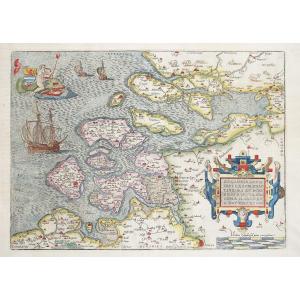

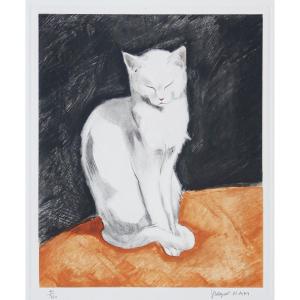
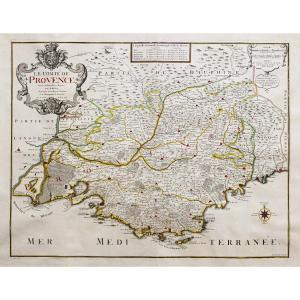
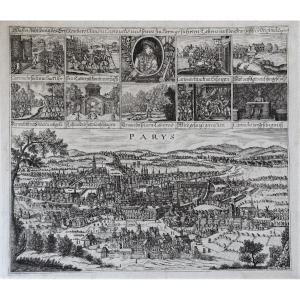
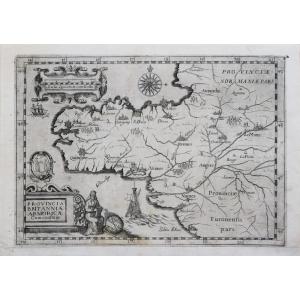



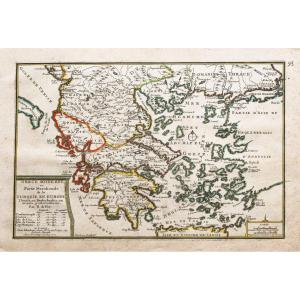
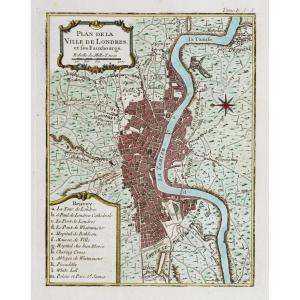



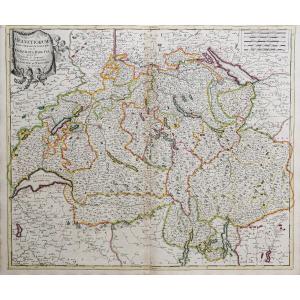
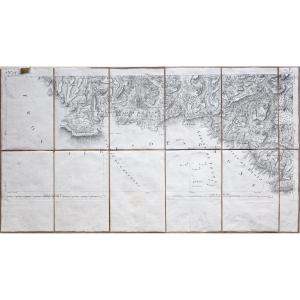

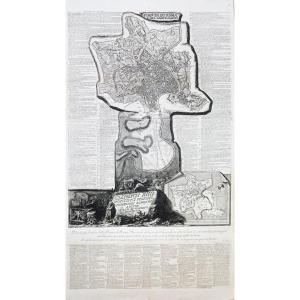
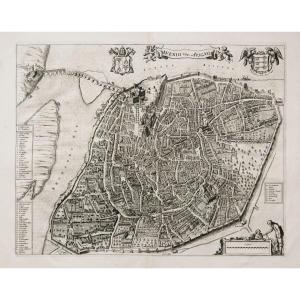



 Le Magazine de PROANTIC
Le Magazine de PROANTIC TRÉSORS Magazine
TRÉSORS Magazine Rivista Artiquariato
Rivista Artiquariato